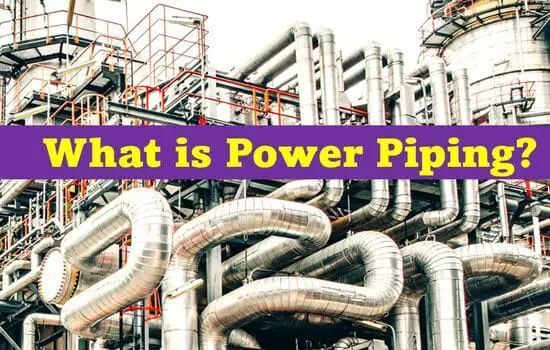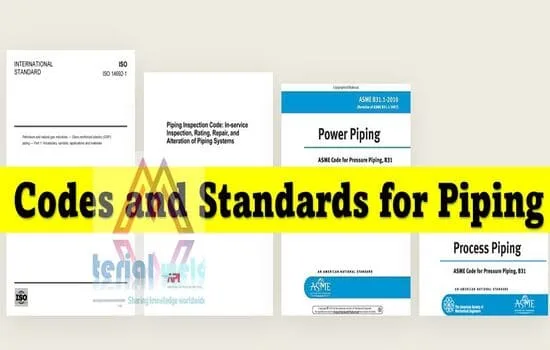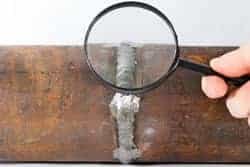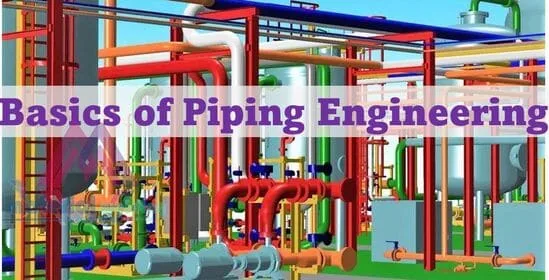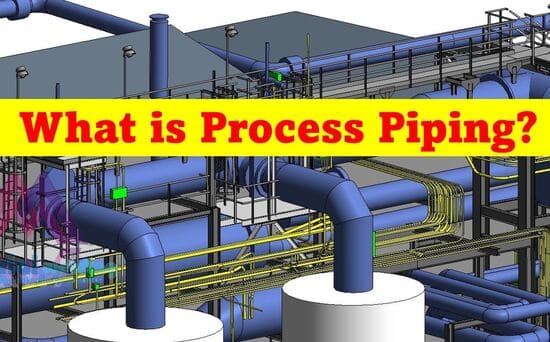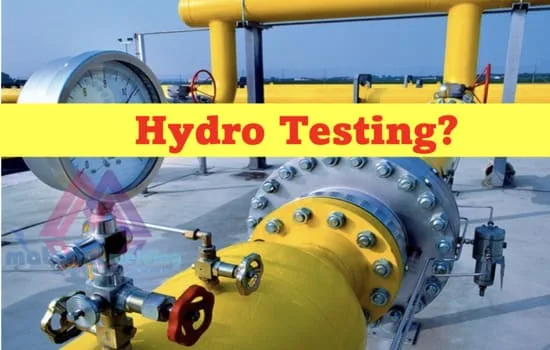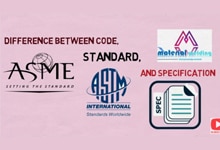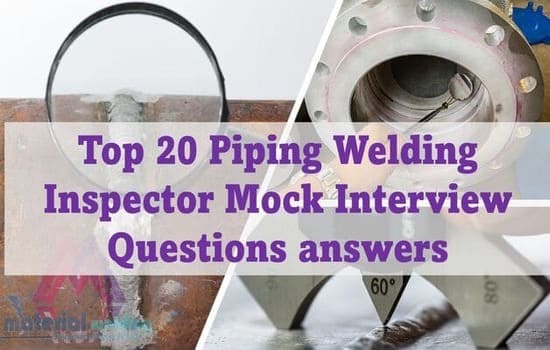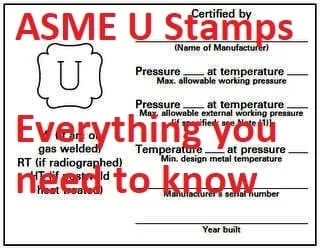ASME B31.1 vs B31.3
ASME B31.1 and B31.3 are two of the most commonly used codes in the piping industry. These codes are developed and published by the American Society of Mechanical Engineers (ASME) and provide guidelines for the design, construction, and maintenance of piping systems.
Both codes are important in ensuring the safe and reliable operation of piping systems and are widely adopted across industries. In this article, we will explore the similarities and differences between ASME B31.1 and B31.3 and provide insights into how to choose the right code for your specific application.
What is ASME B31.1 Power Piping Code?
ASME B31.1, also known as the Power Piping Code, is a code published by the American Society of Mechanical Engineers (ASME) that provides requirements for the design, construction, inspection, testing, installation, operation & Maintenace of power piping used in power plants, including nuclear power plants, industrial and institutional facilities, and heating and cooling systems.
Power piping refers to piping systems that are used in power generation facilities, such as nuclear, fossil fuel, and hydroelectric power plants, as well as in other industrial settings where high-pressure & high temperature fluids or gases are used (e.g., water, steam, compressed air). These piping systems are subject to high temperatures, pressures, and stresses, and must be designed and constructed to withstand these conditions.
The ASME B31.1 code covers a wide range of topics related to power piping, including materials, design, fabrication, installation & erection, examination (testing & inspection), operation and maintenance. It also provides guidelines for the operation and maintenance of power piping systems, as well as requirements for documentation and record keeping.
Some of the key requirements of the ASME B31.1 code include the use of appropriate materials of construction, the use of qualified welders and welding procedures, the application of pressure tests and non-destructive examination methods to ensure the integrity of the piping system, and the use of appropriate safety devices and procedures to protect personnel and the environment.
What is ASME B31.3 Process Piping Code?
ASME B31.3, also known as the Process Piping Code, is a code developed & published by the American Society of Mechanical Engineers (ASME) that provides guidelines, rules, and requirements for the design, materials, fabrication, installation, examination, inspection, & testing, assembly and erection of process piping systems. These systems are typically found in industrial plants, petroleum refineries, chemical and pharmaceutical facilities, food and beverage processing plants, and other similar facilities for handling chemicals, petroleum-products, liquids, gas, cryogenic fluids and refrigerants.
The primary purpose of ASME B31.3 is to ensure the safety and reliability of process piping systems by establishing a uniform, comprehensive set of engineering principles and best practices. The code is regularly updated to incorporate new research findings, technological advancements, and industry feedback, ensuring that it remains relevant and effective by the ASME.
Key topics covered in ASME B31.3 include:
- Scope and definitions: Explanation of the code’s applicability and important terminology.
- Design: Guidelines for the design of piping systems, including pressure and temperature ratings, material selection, layout, and support requirements.
- Materials: Specifications for acceptable materials and their allowable stress values.
- Fabrication, assembly, and erection: Requirements for welding, brazing, and other joining methods, as well as procedures for assembling and erecting piping systems.
- Inspection, examination, and testing: Procedures for ensuring the quality and integrity of process piping systems, including nondestructive examination methods, pressure testing, and leak testing.
- Nonmetallic piping and piping lined with nonmetals: Special considerations for piping systems made from or lined with nonmetallic materials.
- Maintenance and repair: Guidelines for maintaining and repairing process piping systems.
ASME B31.1 vs B31.3 Comparison
| ASME B31.1 (Power Piping) | ASME B31.3 (Process Piping) | ||
| 1 | Scope | Piping systems in power plants, industrial and institutional facilities, and heating and cooling systems with limited scope. | Piping systems in chemical, petroleum, food & beverages, and other process industries with broad scope. |
| 2 | Basic Allowable Material Stress | ASME B31.3 allows for a higher basic allowable material stress value compared to B31.1. | B31.1 has lower basic allowable stress compared to B31.3. |
| 3 | Factor of Safety (FoS) | High FoS, up to 4.0. | Lower FoS, up to 3.0 compared to B31.1. |
| 4 | SIF for butt joints | SIF of 1.0 for Butt (Groove) welded Joints. | SIF of maximum up to 1.9 for stress calculations. |
| 5 | Use of SIF on Reducers | Uses SIF up to 1.9 max for stress calculations. | Does not use SIF on reducers. |
| 6 | Approach for SIF | ASME B31.1 uses a simplified approach for calculating stress intensification factors (SIF) | ASME B31.3 employs a complex approach for determining the stress intensification factors (SIF) for in-plane and out-of-plane loads. |
| 7 | Design Pressure and Temperature Limits | High-pressure and high-temperature applications. | Lower pressure and temperature applications. |
| 8 | Torsional stresses | ASME B31.1 includes torsional stresses in sustain case loading. | ASME B31.3 neglect torsion in sustain case loading. |
| 9 | Material Standards | Accepts a wider range of materials, including carbon steel, stainless steel, and alloy steel. | Limits materials to those that are suitable for corrosive and hazardous environments. |
| 10 | Pipe wall thickness calculation equations | The pipe wall thickness calculation equation specified in B31.3 is only valid for pipes where the wall thickness is less than one-sixth of the outside diameter, i.e., t < D/6. | Unlike ASME B31.3, ASME B31.1 does not have a limitation on pipe wall thickness based on the pipe’s outside diameter. |
| 11 | Rule for LTS applications below -29°C | No such rules for low temperature material applications. | Detailed conditions for using material less than -29°C temperatures. |
| 12 | Fabrication and Installation | More emphasis on welded joints and installation procedures, including quality control and testing. | Emphasis on flanged, threaded, and mechanical joints, including gasket selection and bolting requirements. |
| 13 | Preheat & PWHT | For Carbon steel up to 19 mm (3/4″): minimum welding preheat of 200°F (95°C) or PWHT otherwise. | PWHT not required for P No. 1 materials upto 25 mm (1″), waived for higher thickness condition to apply minimum welding preheat of 200°F (95°C). |
| 14 | Inspection and Testing | Extensive testing requirements, including hydrostatic and pneumatic tests, radiographic and ultrasonic examinations, and visual inspections. | Similar testing requirements, but with additional considerations for piping systems that transport hazardous or toxic materials. |
| 15 | Hydro (leak) Testing | Piping systems undergo a hydraulic test at 1.5 times the design pressure and a pneumatic test at 1.2 to 1.5 times the design pressure | hydraulic test is conducted at 1.5 times the design pressure, adjusted for temperature, while a pneumatic test at 1.1- 1.33 times the design pressure. For Category D fluids, a leak test may be sufficient initially, while other fluids require hydrostatic or pneumatic testing. Category M fluids require a sensitive leak test in addition to hydrostatic or pneumatic testing. |
| 16 | Maintenance and Repair | Guidelines for the maintenance and repair of piping systems, including repair of leaks, replacement of components, and pressure testing after repairs. | Guidelines for inspection and repair of piping systems, including pressure testing, leak testing, and non-destructive examination. |
| 17 | Design Life | For a life span of 40+ Years. | For a life span of 20- 30 Years. |
| 18 | Maximum CSR (Cyclic stress range) Factor | Specific equations & Rules are given for CSR in B31.1 Code. | No rules or equations for CSR in B31.3. |
